An excellent way to quickly and radically update the interior is to repaint walls. We tell about how to choose the appropriate color of the paint, calculate its quantity, as well as we list the popular decorative staining techniques.
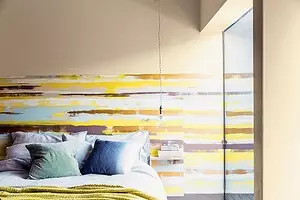
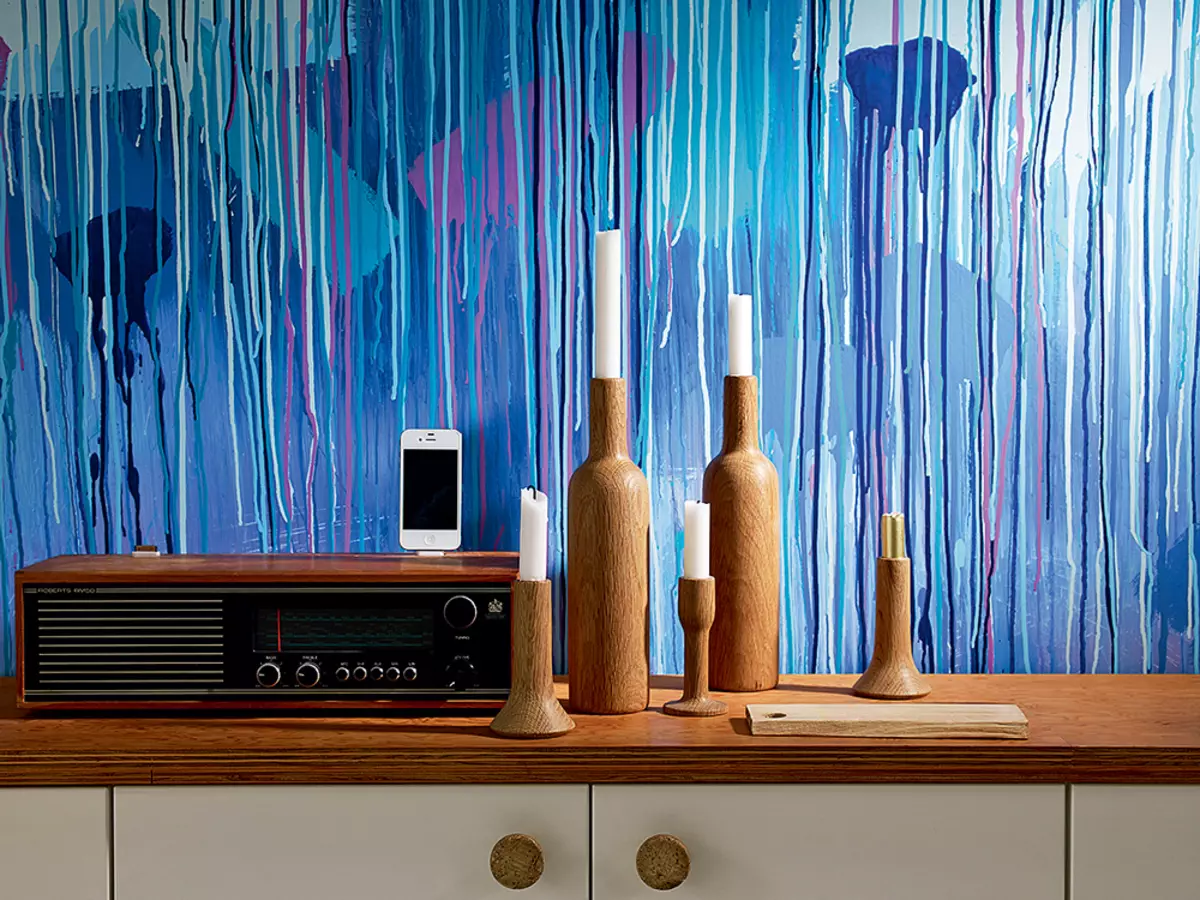
Paint is the most multifaceted material for interior design. At your disposal - different colors, drawings, structures, as well as special effects. Photo: Akzo Nobel
Among the monotony of everyday worries sometimes it is so important to look at your home at an unusual angle, to find the original way to bloom the interior, create a situation that will bring something new to everyday life. And modern paints will help in this. In addition to unlimited opportunities for creativity, they will probably inspire many for the embodiment of their own ideas (of course, taking into account the recommendations of specialists).
Do not be afraid of experiments. Boldly use paints with different degrees of gloss (compatible, better than one manufacturer), forcing the surface to play and unusually reflect the light. Combine dark and light tones - they will create the illusion of depths on the plane, and the fading, layered and matte materials will strengthen this effect. Combine paints of the same color, but varying degrees of saturation. So you diversify the interior without violating his harmony.
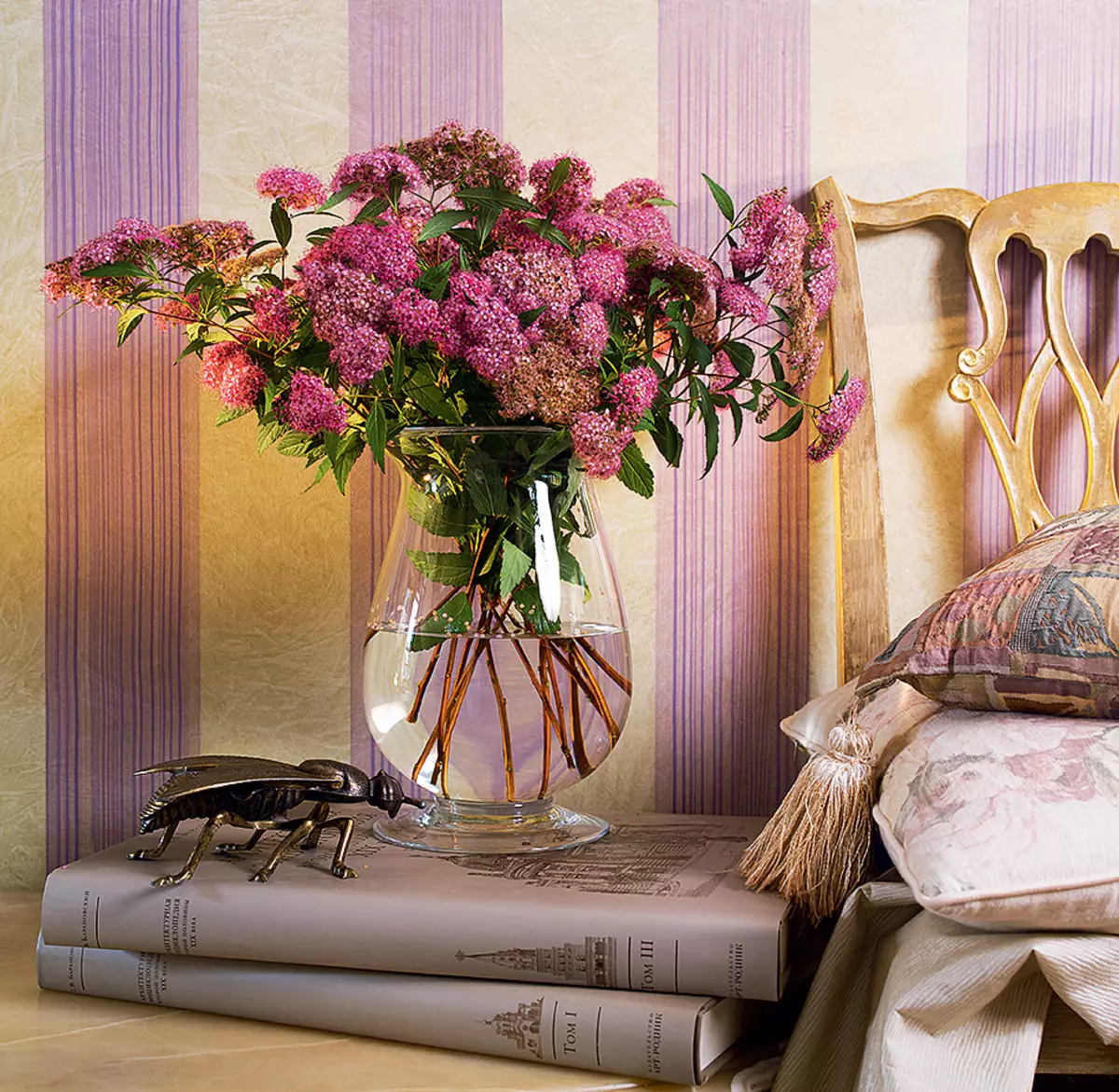
Photo: "Marat Ka"
In addition, the choice of high-quality paints and varnishes in the domestic market is huge. They are offered major international corporations and small companies, the most popular Akzo Nobel products (Dulux trademark), Farow & Ball, Little Green, Paritet Decor, Oikos, Tikkurila, Marat Ka.
Colorful coatings and special decorative techniques are able to transform forgotten and imperceptible corners of the house. Today, when the value and price of the useful area grow, this property is very relevant, and the techniques for disclosing the potential of little spaces are caused by genuine interest.
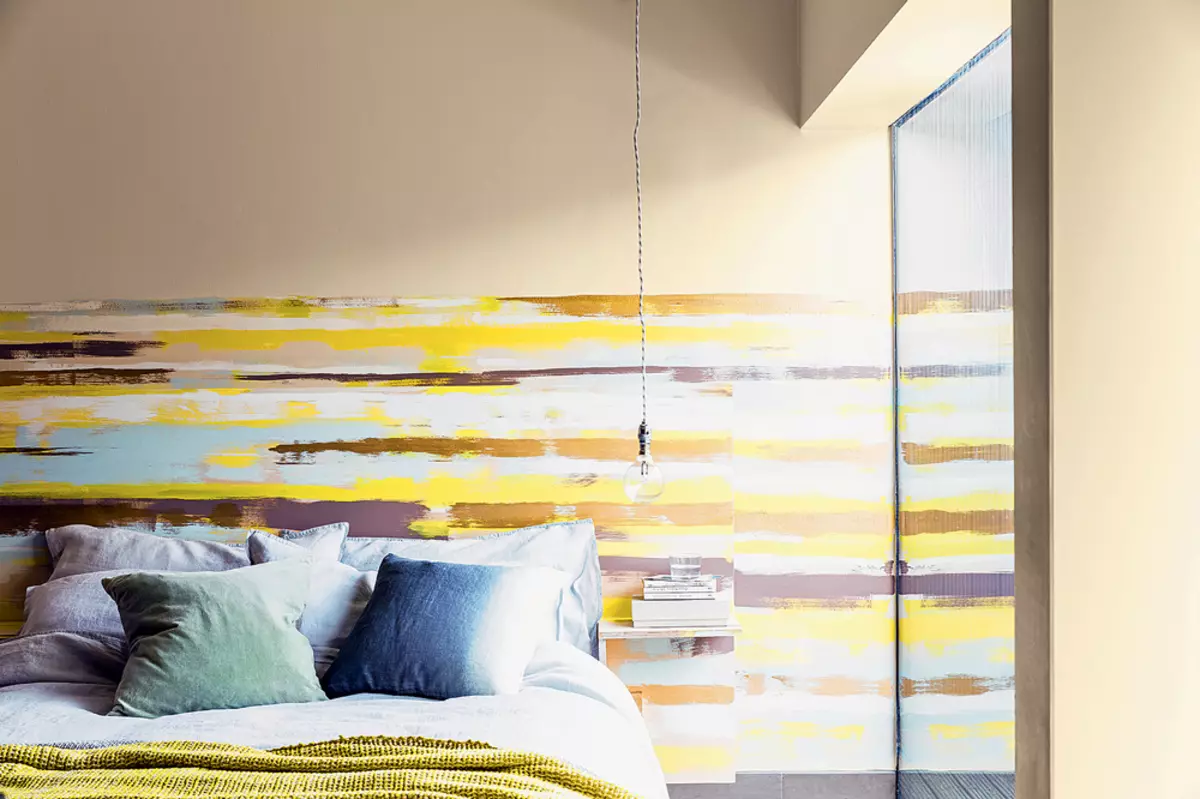
Photo: Akzo Nobel
How to combine different colors of paints
The walls form the largest surface in the room. Therefore, the color of the paint and the method of applying it affects the atmosphere of the room. Fashion trend - a combination of paints adjacent to the color circle (for example, red and orange, blue and green, etc.). It is important that their shades have the same saturation. If the interiors of neutral colors seem boring, they are diluted with contrasting paints. Variating the color intensity, the premises are given the necessary depth and volume. And yet it is necessary to entrust the creation of a multicolor palette of a professional or take advantage of the ready-made offers from directories.
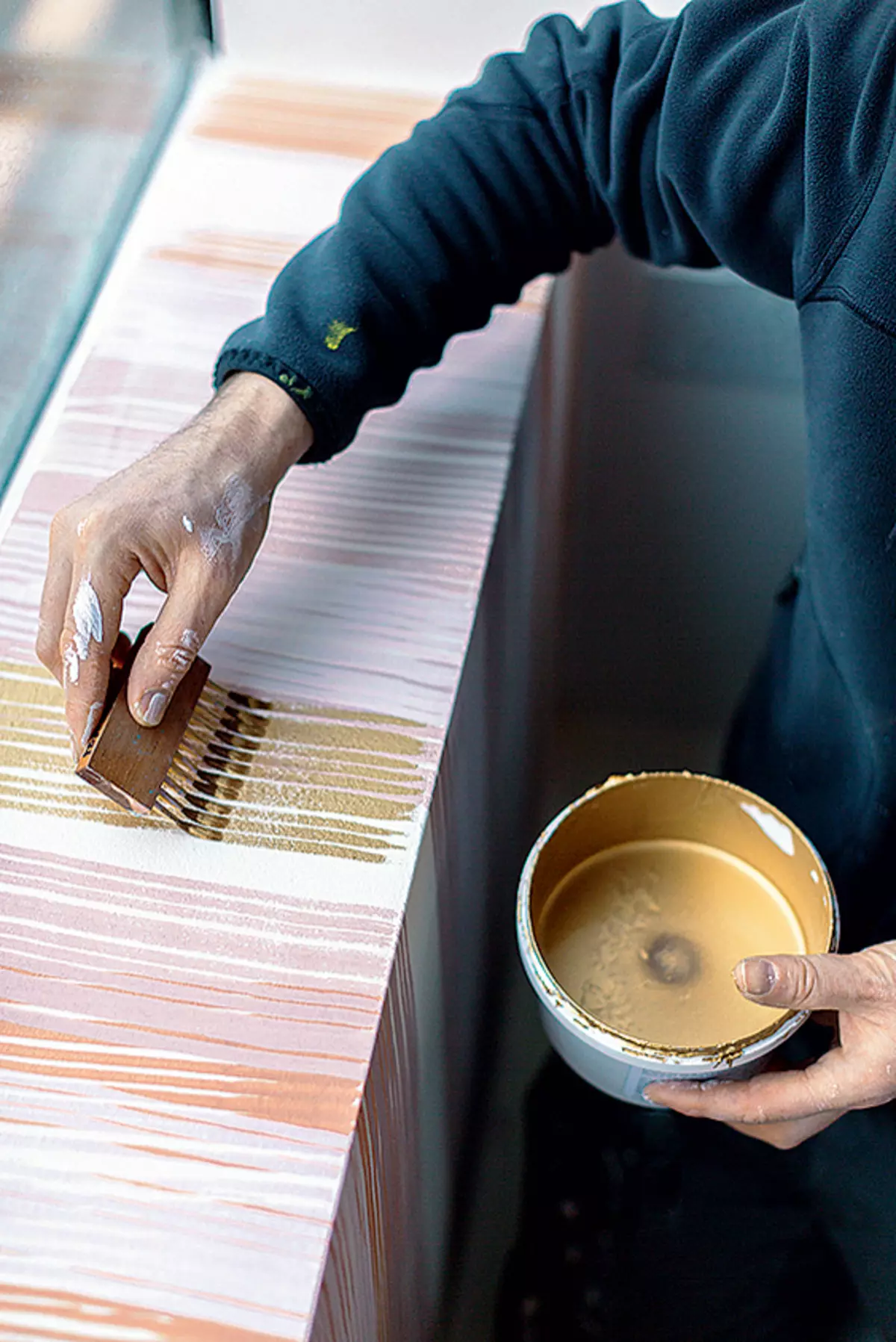
Photo: Akzo Nobel
5 color choices
- Make trial cuts in place. Use test banks from paint different shades in order to make sure that you liked the colors on the walls will look like in catalogs or the Internet. Test banks of the minimum volume (1 l) can be ordered on the Internet or purchased in construction stores.
- Apply on a piece of white paper the size of A4 two layers of paint (with intermediate drying). See how the selected color looks under the sunny rays and with artificial light. Print the sample to the wall and explore it at different times during the day. You will notice that the lighting strongly affects the perception of light shades.
- Remember that the wrong paint looks differently than dry. Therefore, wait until the colorful layer is completely dry, and then make a choice.
- Pay attention to which side of the room windows are overlooked. In a room-oriented room, most colors seem darker and colder due to weak lighting.
- Take into account the size of the room: light pastel tones are more appropriate in small rooms, in spacious - deep and dark. Although strict rules in the field of color combinations do not exist.
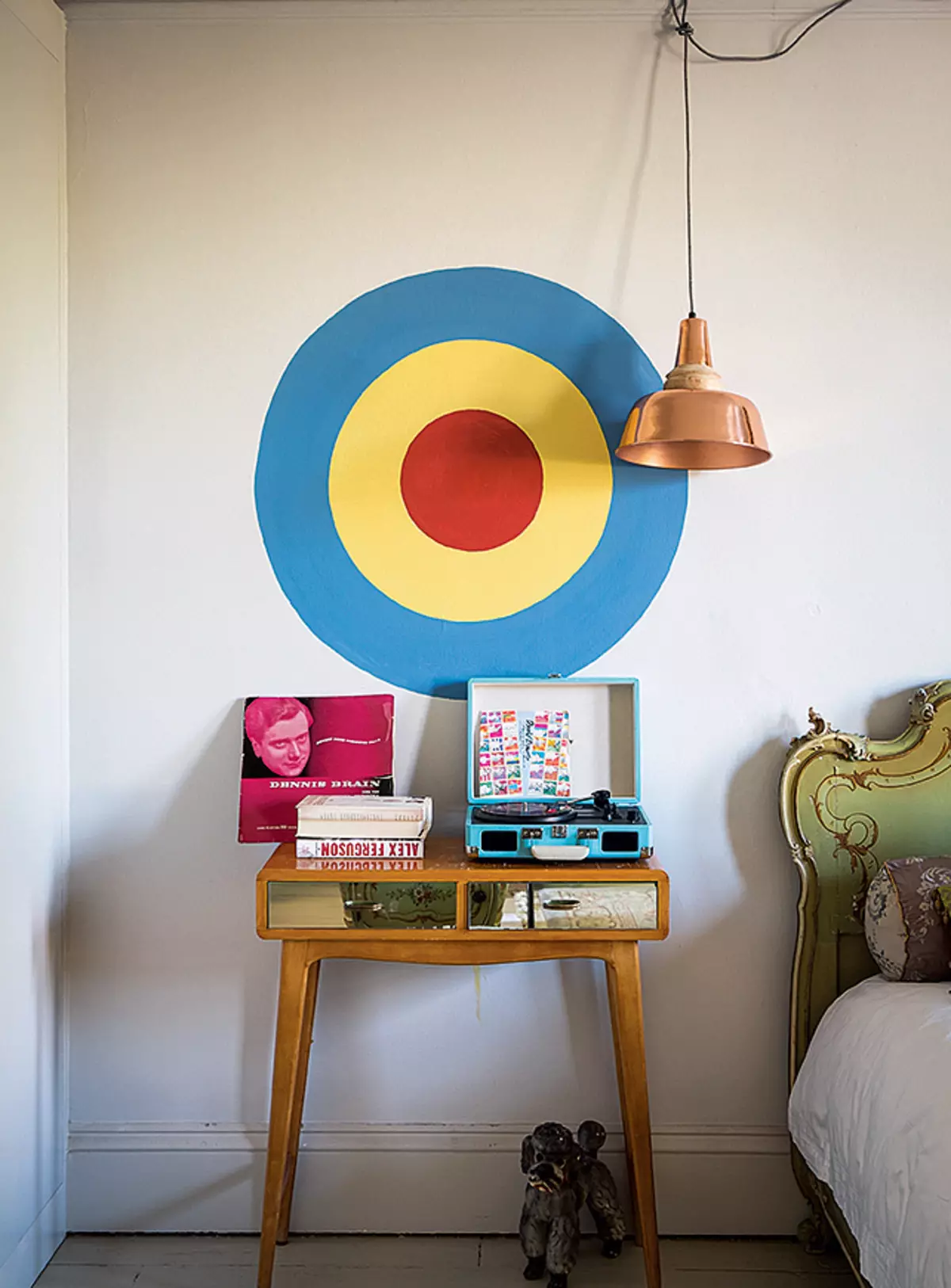
Photo: Farrow & Ball
How to choose the paint of the same color
Sad, inexpressive or too fast, the interiors are tired of vision and nervous system. But the walls of clean saturated colors are able to raise the mood. How to choose the perfect, suitable color exactly? Watch how it is perceived at different times of the day, with different lighting, and then adjust the tone. Consider when the room will be used more often - in the morning, day or evening, and select a shade that best looks at this time. Actual trends of the season - the color of the earth and the whole gamma of gray. Not losing the popularity of green, blue, turquoise and other water shades, as well as their watercolor variations.
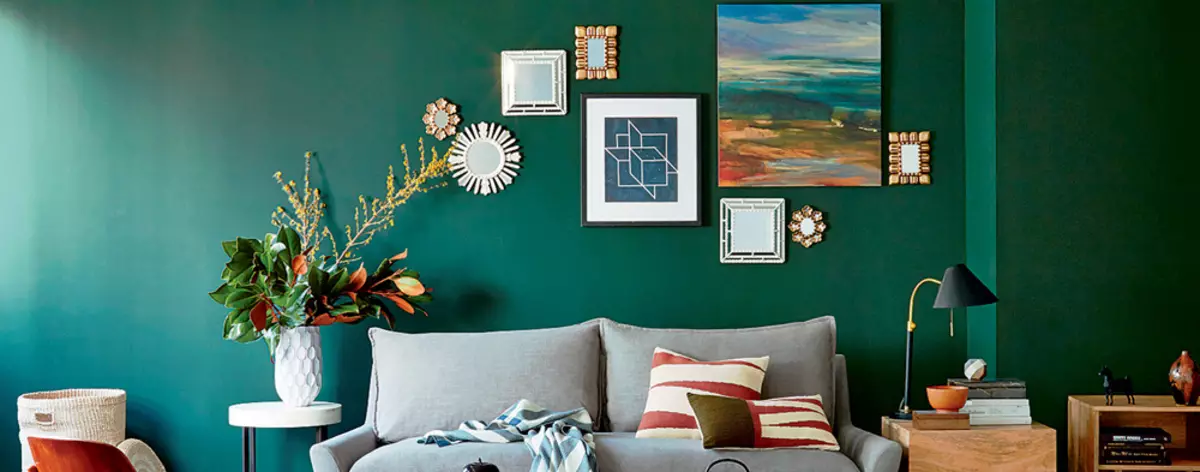
Deep, natural, stylish colors contribute to creating a coziness and the corresponding mood in the interior. The covered walls have a unique ability not to bother over time, "born" into space, and look at various lighting scenarios. Photo: Sherwin-Williams
Consider lighting
Choosing paint, consider the type of electrical lamps and the color created by them. The lamps of one spectrum are able to strengthen the intensity of the color of the walls (if they are from one gamma), the other - on the contrary, give them dullness (if they are from different palette). So, the incandescent lamps give yellow light that muffles cold colors (changing their shades) and enhances warm. Due to fluorescent lamps of daylight, white walls acquire a greenish-blue shade, and warm colors look shy. Similar lighting devices of a warm spectrum soften cold tones, and warm make more cheerful.
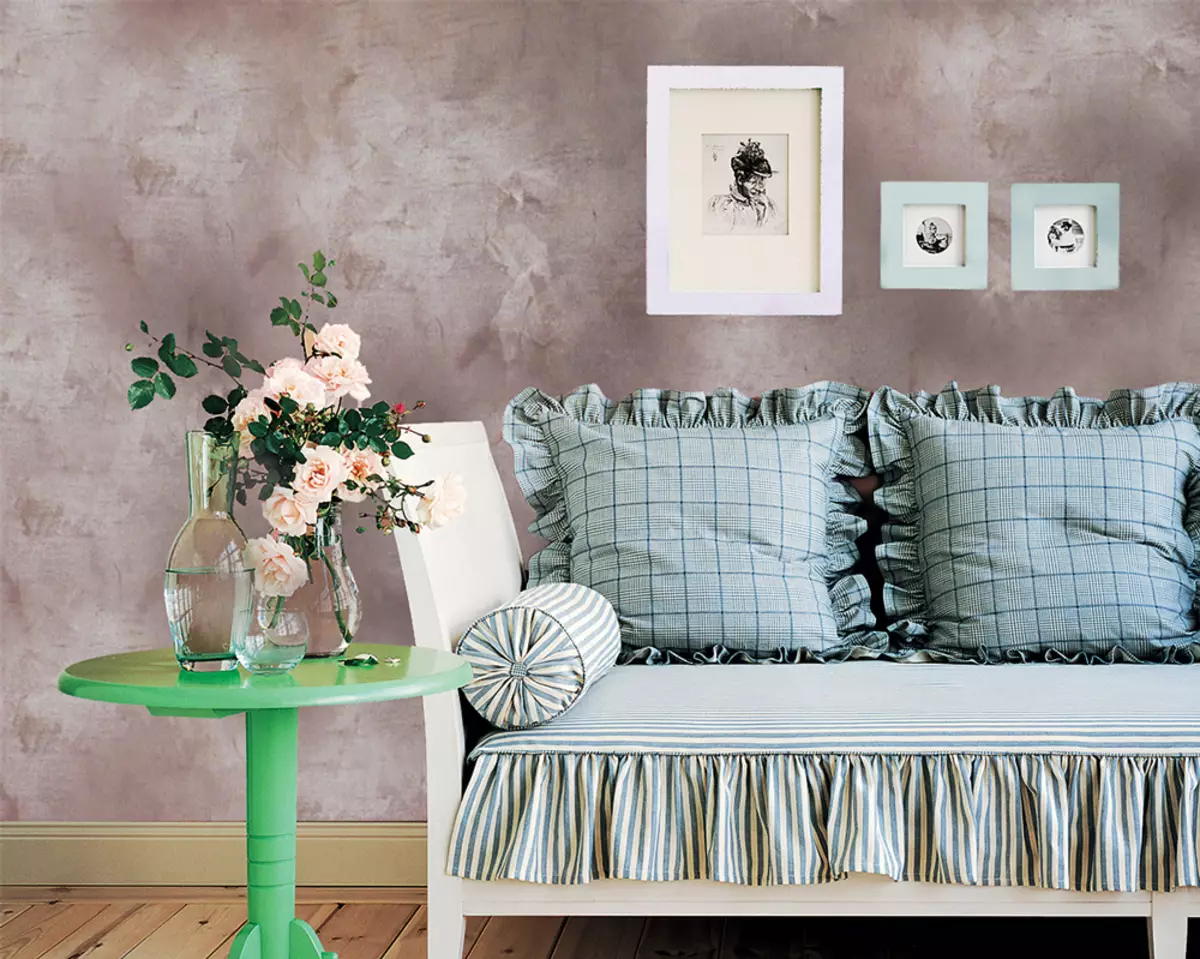
Unusual visual, including 3D effects, are obtained when applying paints not only by stencil, but also when using special tools: spatulas, decorative rollers, wide brushes, sponges, etc. The imposition of paints of different colors and shades allows you to revive a monochrome surface. Photo: Paritet Decor
How many paints need
The overall area of the area (m²) multiply by the number of coating layers (at least two). Then split the result on the paint consumption (m² / l) - it is sure to indicate a bank. The resulting value (L) is equal to the required amount of paint. Note that the actual consumption of the material may differ from the label given on the label, as it depends on the absorbent properties of the surface to be painted. If you pre-strung the walls, it will take less paint.
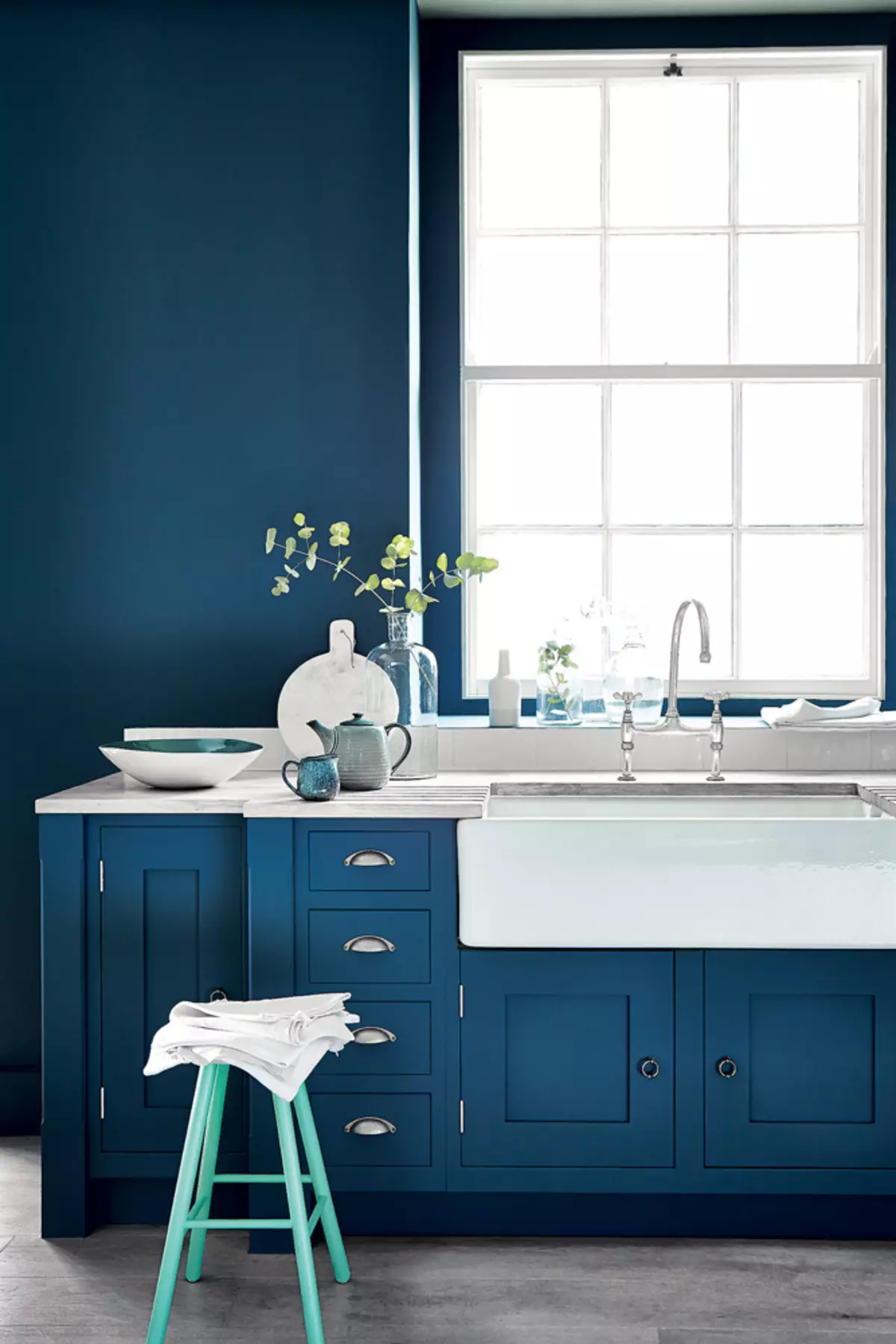
Photo: Little Green
Methods of applying paint
1. Graphic lines
This technology allows you to create ornaments in the form of horizontal, vertical, oblique strips, geometric shapes, etc. The technique is simple, but requires accuracy. The figures are planned with chalk, pencil, sticky ribbon. The last remove immediately after staining, until the wall has dried yet. The interior will look more interesting and distinguished if combining several colors and different decoration techniques, such as painting along the lines and stencil. The combination of paints and more thick-layer structural coatings will help achieve relief and accuracy in the image of flowers, animals, various items.

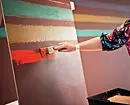
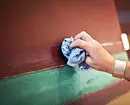
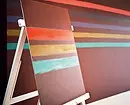
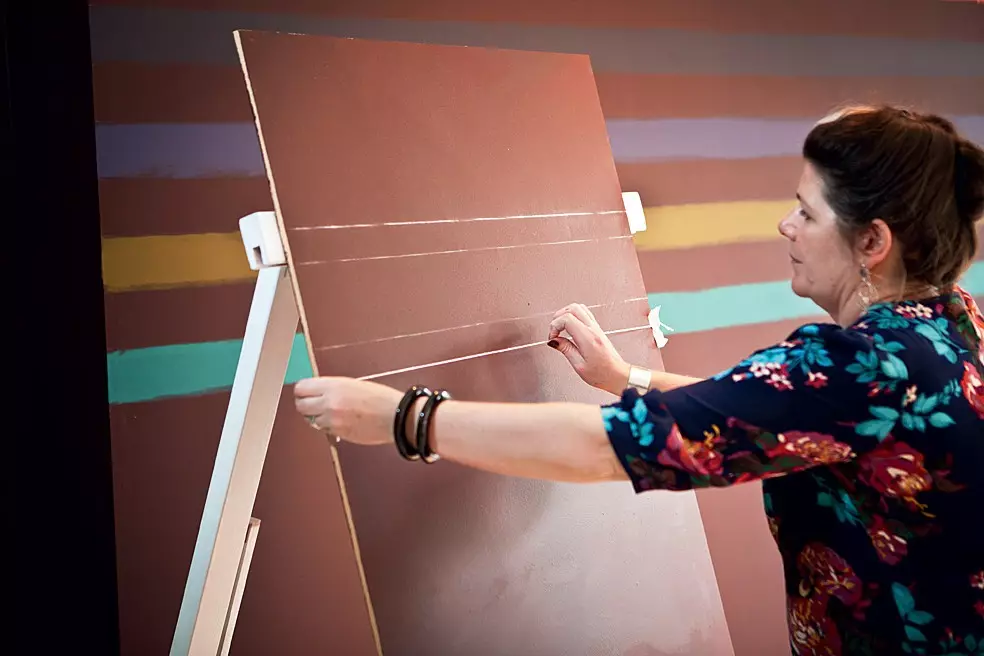
Long straight lines are planned using a shedron chalk of rope. Photo: Akzo Nobel
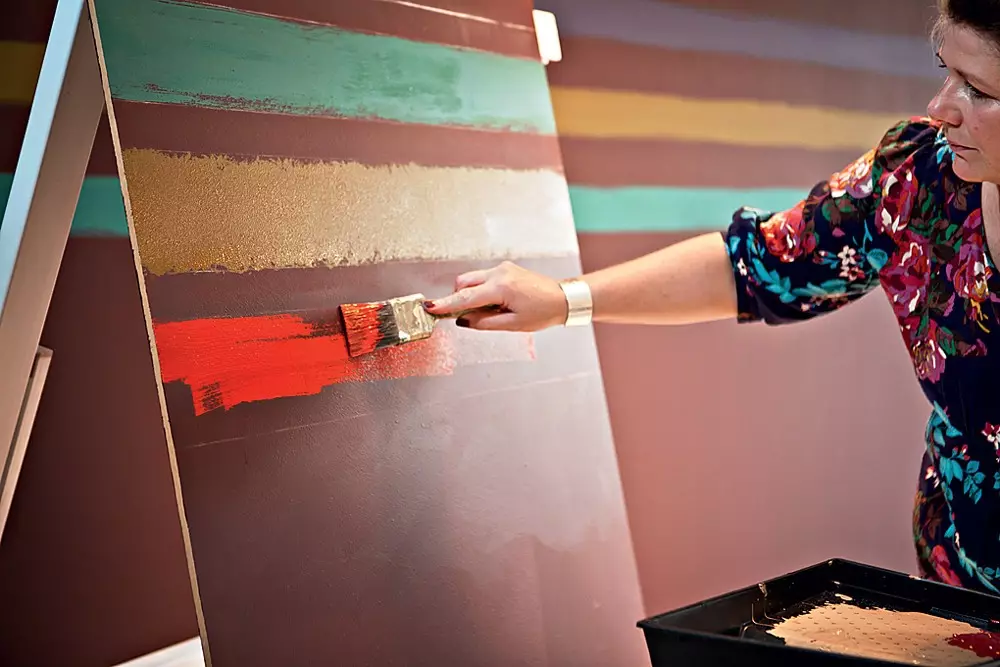
The resulting strips are painted in different colors. Photo: Akzo Nobel
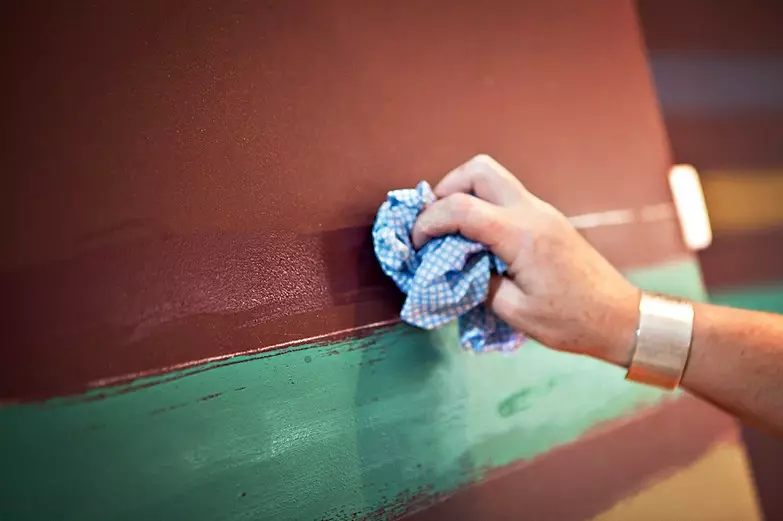
Remove traces of chalk. Photo: Akzo Nobel
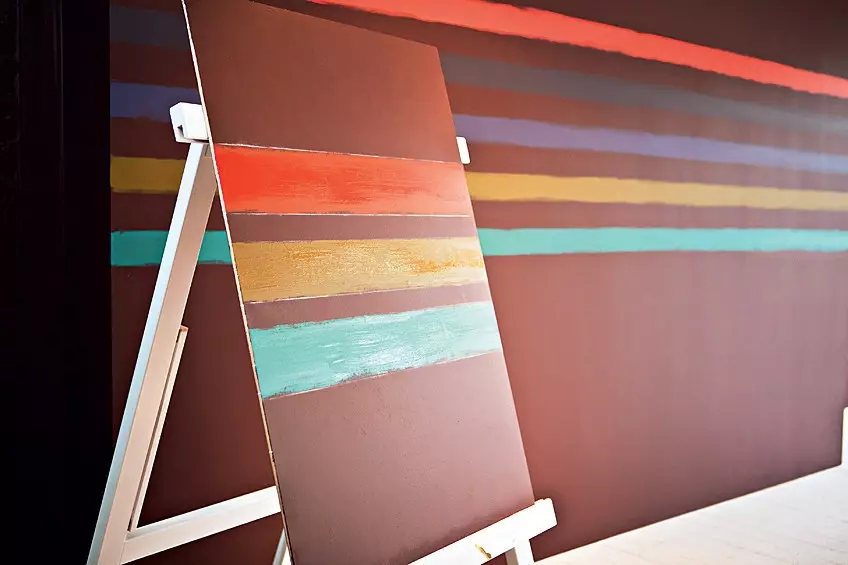
The uncomplicated graphics and saturated colors are inherent in the style of "City Folklore", which reflects the flavor and traditions of the folk art of different parts of the world. Photo: Akzo Nobel
Tips for cleaning the brushes
- After working on a water-based paint, the brush is soaked in warm water for 2 hours. Then washed with water, wipe with clean cloth and stored in a dry place. Ideally - in suspended state, bristles down.
- After working as paint on solvents, a solvent is poured into a small container and immersed in there a brush in such a way that the agent reaches the base of the bristle. The tool is left in the liquid for 2 hours. Then they are rinsed, dried with a clean cloth and placed in a dry place.
- If the painting works are not finished, but a break is needed, remove the paint in paint with the help of the tissue, wrap the bristle with a food film or a polyethylene package, compact its edges with painting tape and place it in a cool place. In this form, the tool can be stored no more than two days.
- Do not use the same brush to apply paintwork materials of different types, even if it was wellhed with the corresponding composition.
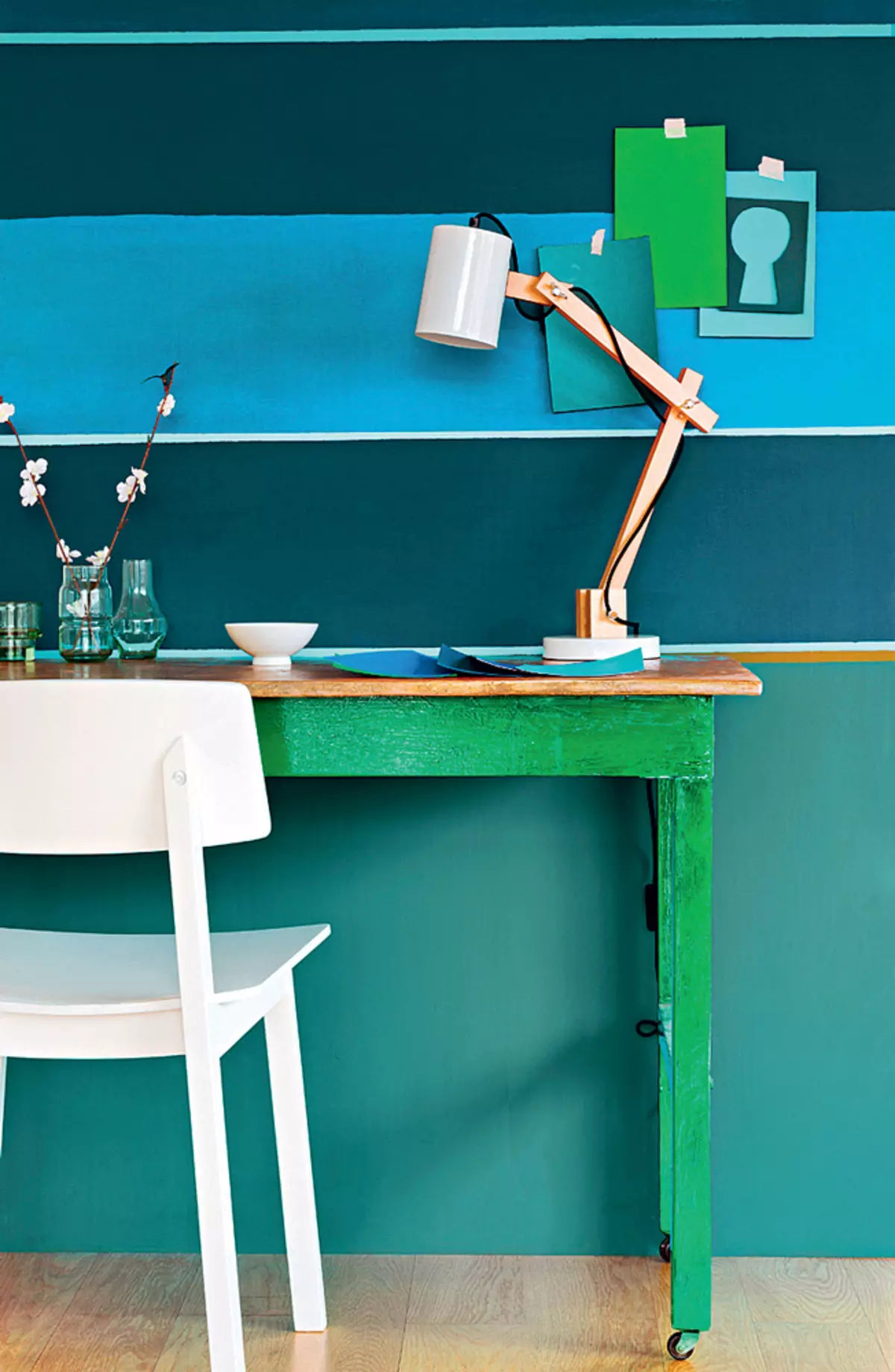
Photo: Akzo Nobel
2. Colorvos
Colorvos - a quick way to make monochrome walls more expressive. Their surface becomes transparent, similar to a watercolor pattern. The colorful layer depending on the selected color seems bright and intense or, on the contrary, pastel and air.
First, an interior paint is applied to a flat primer wall, for example "harmony" (Tikkurila), and give it to dry. Then they mix it with water in the ratio of 1: 1 and the sponge is applied to the wall with light circular, "detergent" movements or slightly rubbing crosswise to shower colors.
Keep in mind that dilute paint leaks, so you need to handle the tool carefully.
One plot is processed until the composition stops to leak, but that the drawing remains clear, the work should not be delayed. Diluted paint dries quickly. Therefore, the next area is transferred, without waiting until the joints are dried. After processing the entire surface, the composition is applied 2-3 times, then the colorful layer will be smooth and color saturated. The unusual effect gives the use of several shades. The main thing is to remember that before applying a new layer, the painted surface should dry.
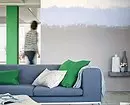

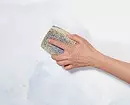

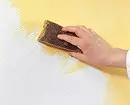
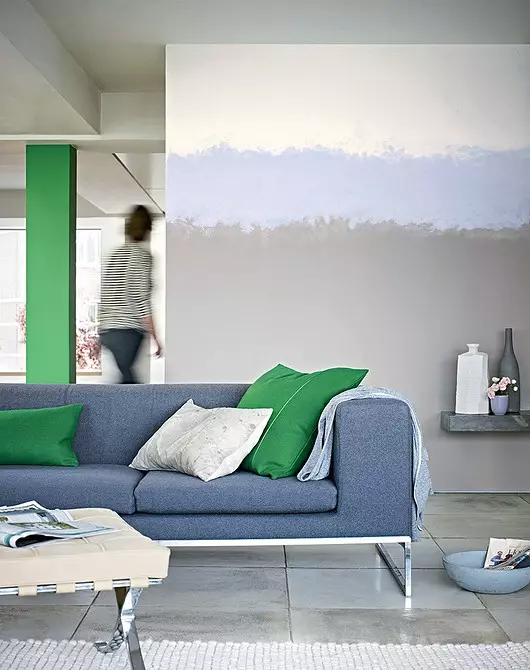
Bringing the composition by missing or multidirectional movements with sponges, you can get absolutely different decor on all flat walls or in colors transition areas. Photo: Akzo Nobel
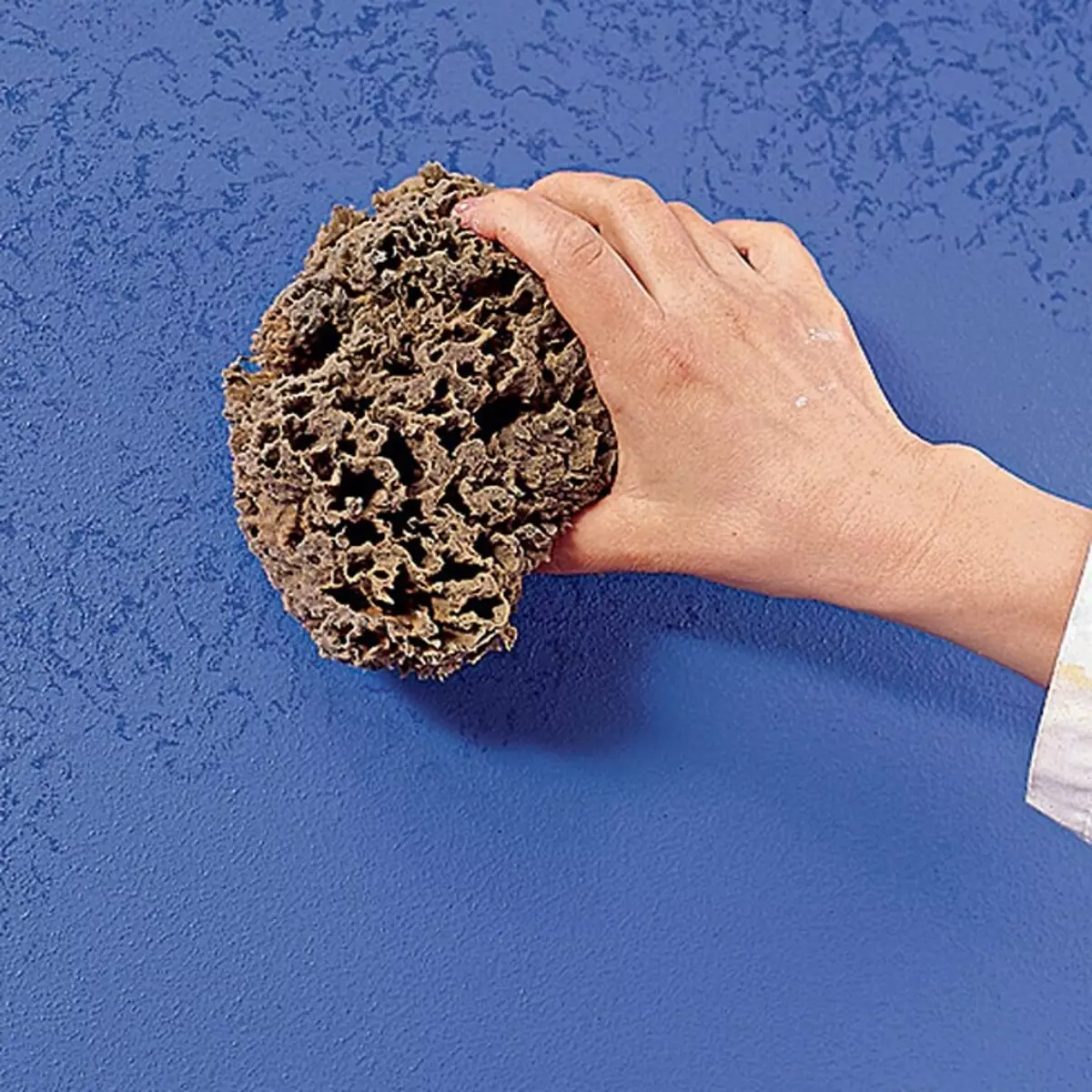
Photo: Tikkurila.
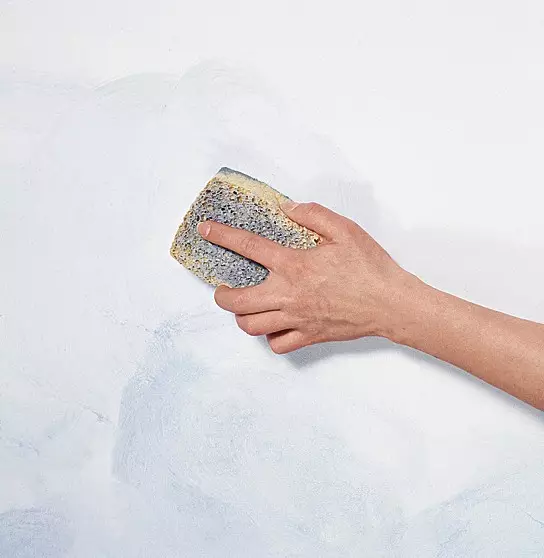
Photo: Tikkurila.
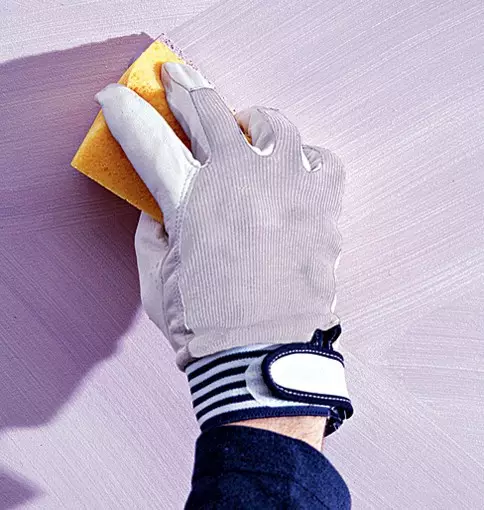
Photo: Tikkurila.
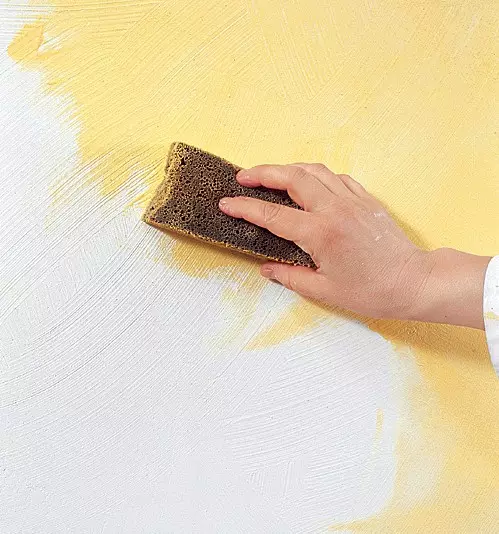
Photo: Tikkurila.
3. Technique "Lon"
Machinery "Luck" allows you to imitate rude natural fabric.

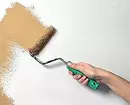
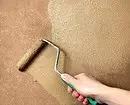
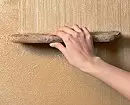
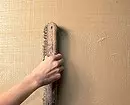
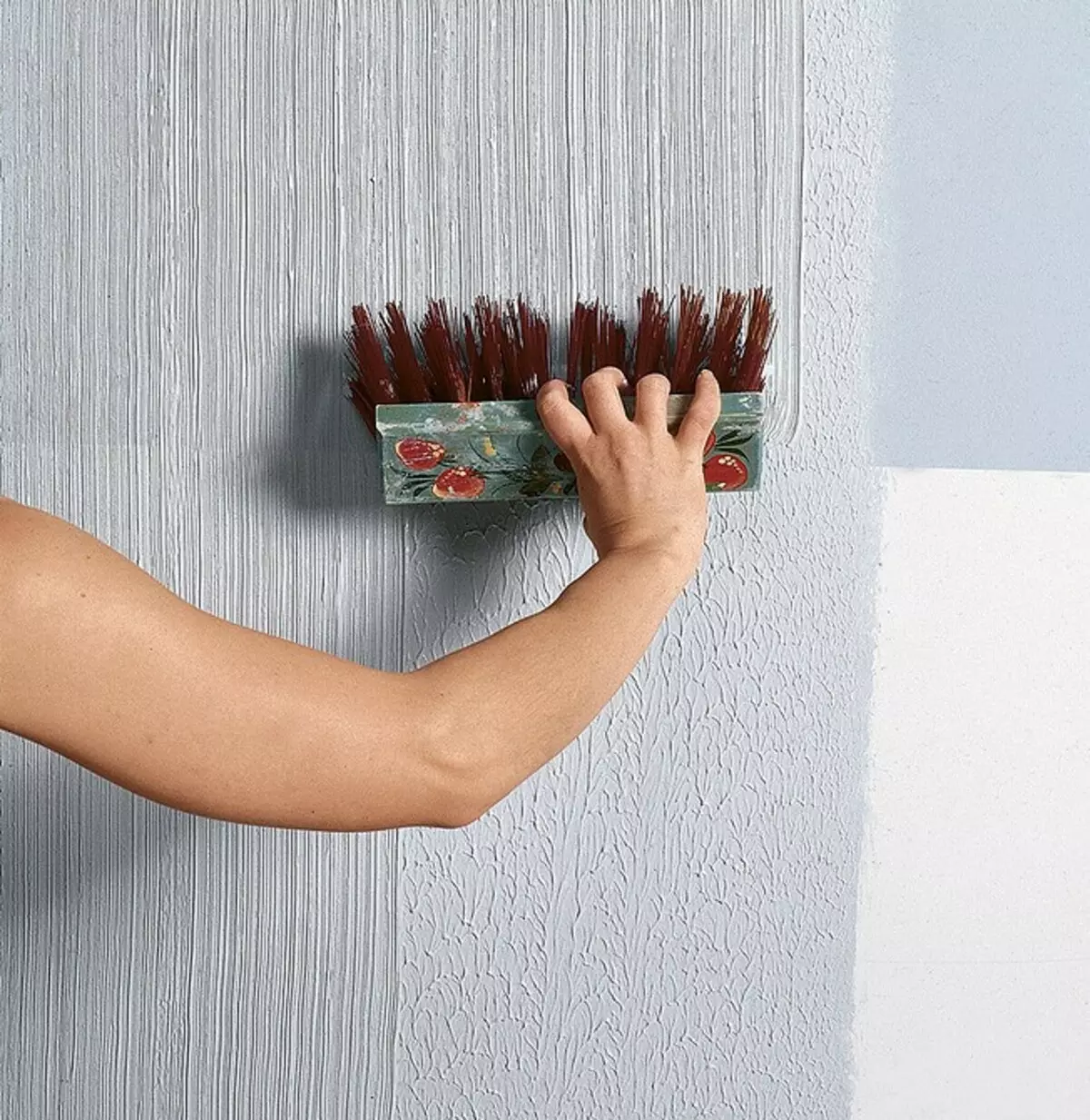
Photo: Tikkurila.
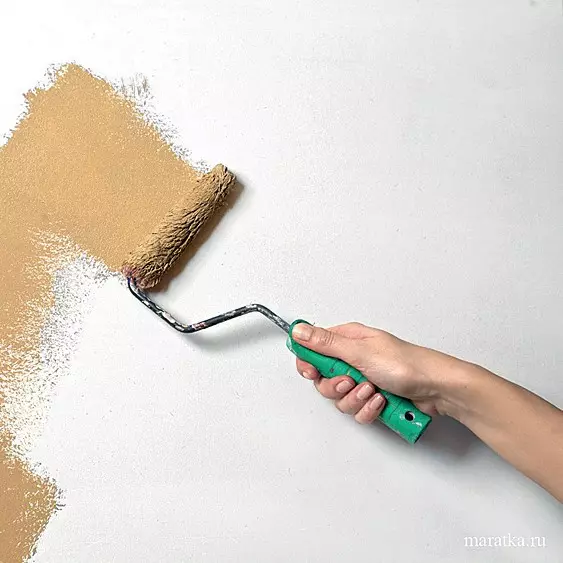
For this purpose, a brush from artificial bristles is used, which creates long broach (embossed strips) for one movement. A color substrate is required for work, so the prepared surface of the wall is covered with the material of the "paint interior" ("Marat Ka"). Photo: "Marat Ka"
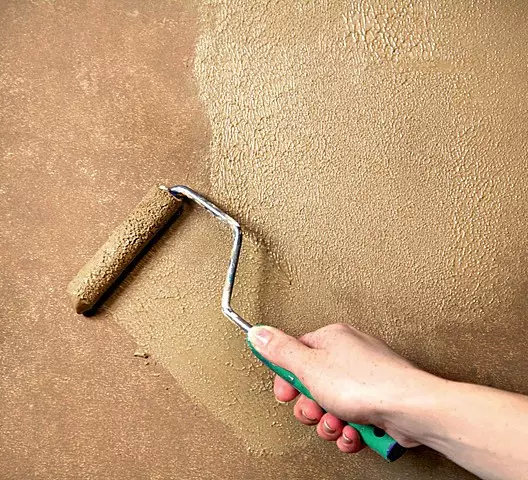
After drying, the layer is applied composition from the mixture of the same paint and powder "Flokaustic Alcantara" ("Marat Ka"). Photo: "Marat Ka"
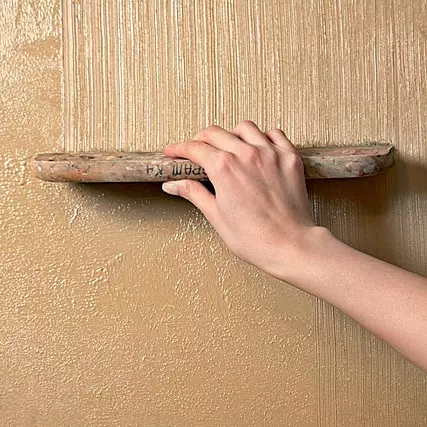
It turns material into decorative plaster. The traditional proportion is 1: 1. However, choosing different powder fractions, the effect can be varied from a pronounced to a slightly noticeable. Without waiting for the drying of the layer, the surface is directed "referring" to the brush with a rigid bristle, holding it parallel to the wall. Photo: "Marat Ka"
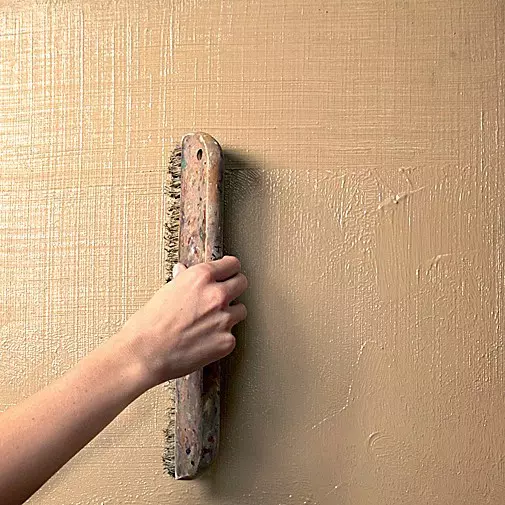
After 12 hours, making sure that the surface dried, the mixture of "Flokaustic Alcantara" and "paints of the interior" and is twisted with a brush in a perpendicular direction. Photo: "Marat Ka"
4. Imitation suede

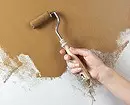
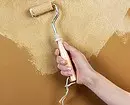
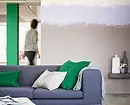
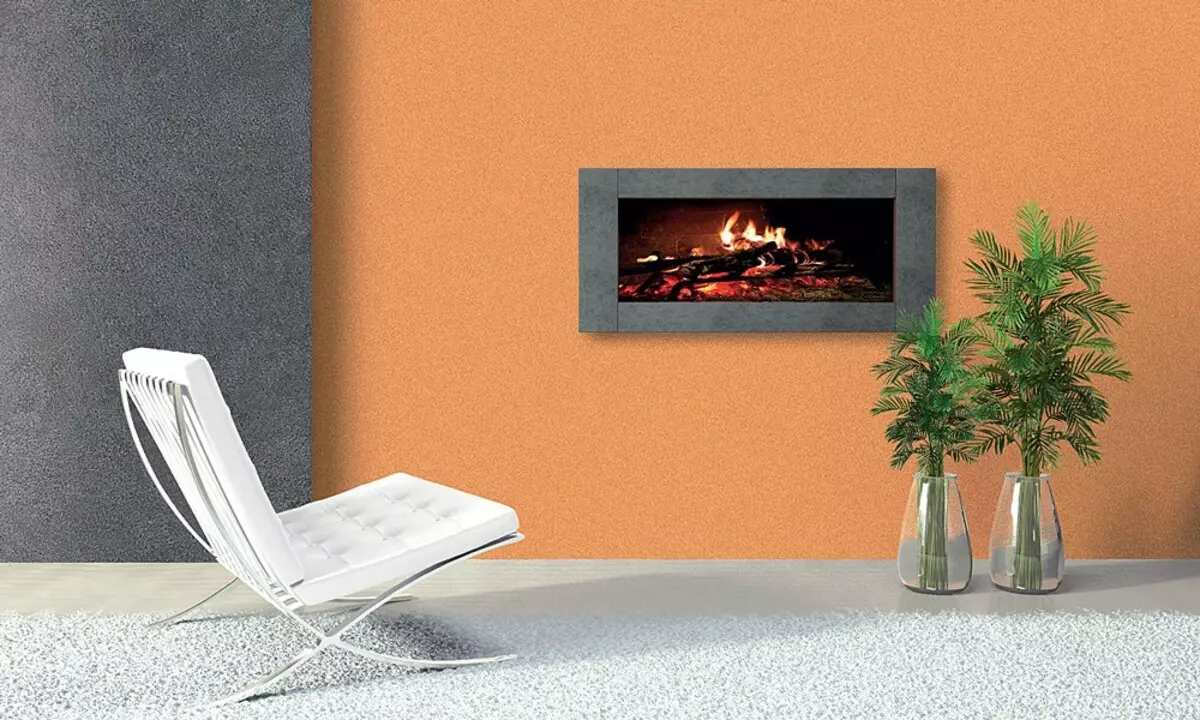
Photo: Valpaint
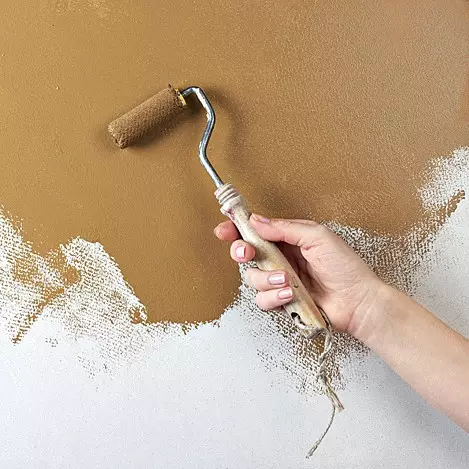
To get a soft surface that imitates the natural suede, first make the substrate, covering the surface of the wall with a roller with the "paint interior". Photo: "Marat Ka"
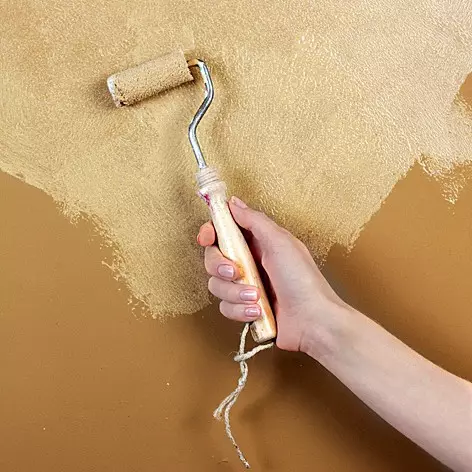
It should correspond to the shade of the painting material "Suede-Paint" (both - "Marat Ka"). The composition is applied to the dried substrate V-shaped movements for a uniform distribution, then carefully roll out the material throughout the area. Photo: "Marat Ka"
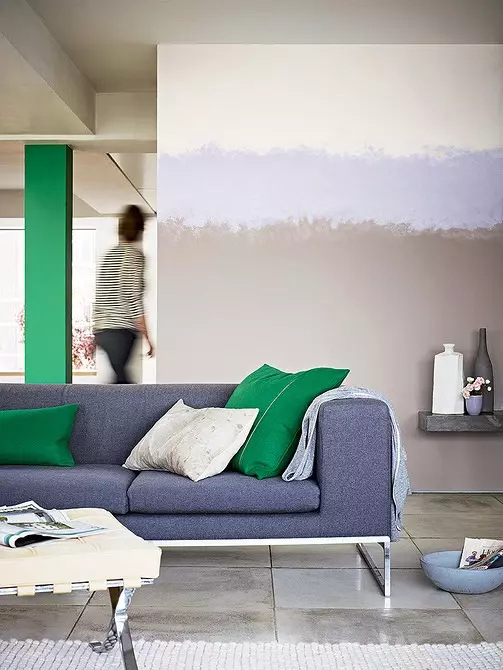
After drying, they apply a second layer using the same technique as for the first one. Photo: "Marat Ka"
5. Decorating roller
One of the simple techniques is decorating with a special roller. Tools of different types are left on the surface of the surface original drawings. The unusual effect will strengthen the background and decorative paint of different shades. At the same time, the wall first covers the interior paint of the selected tone and give it to dry. Then, an ordinary roller (1 m) of the interior paint of another color or a shade is applied to the surface of the interior paint or the shade and immediately decorate the wet layer, rolling with a decorative roller. After that, they start staining the next strip, overlapping the separated area so that it remains wet.
It is more convenient to work together: one causes paint on the wall, and the second decorates the surface of the roller. Do not forget to periodically clean the roller, rolling it in a clean sheet of cardboard or wiping with a wet cloth. By the way, the roller coat can be made independently - wrapped the usual roller with a cloth, suede, plastic bag and fixing the material by the rope.



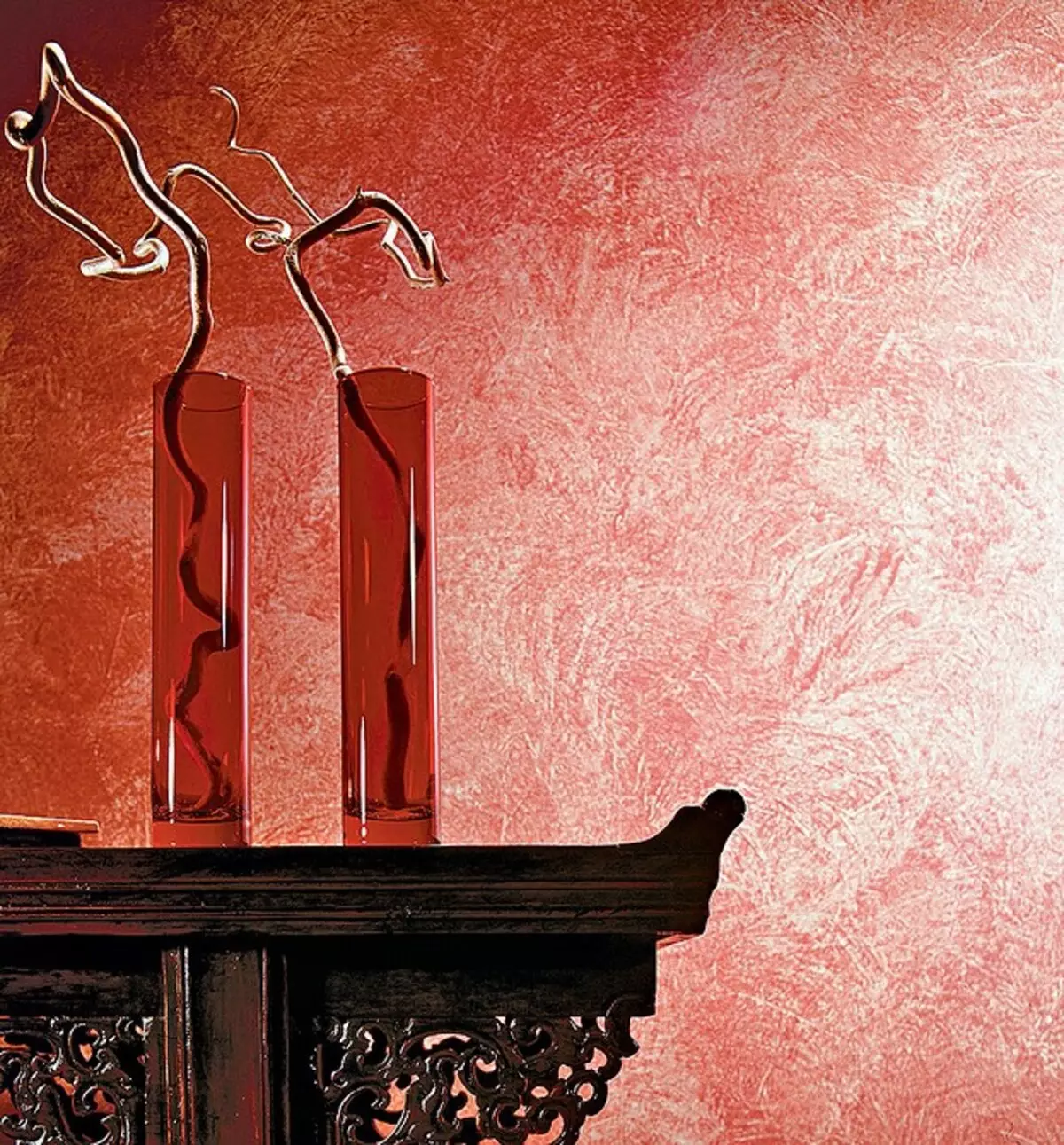
Photo: Tikkurila.
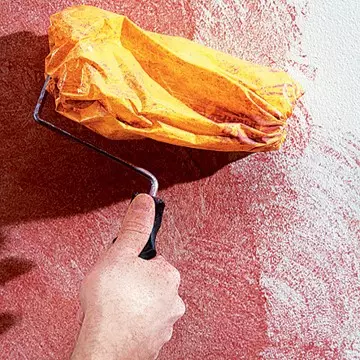
Photo: Tikkurila.
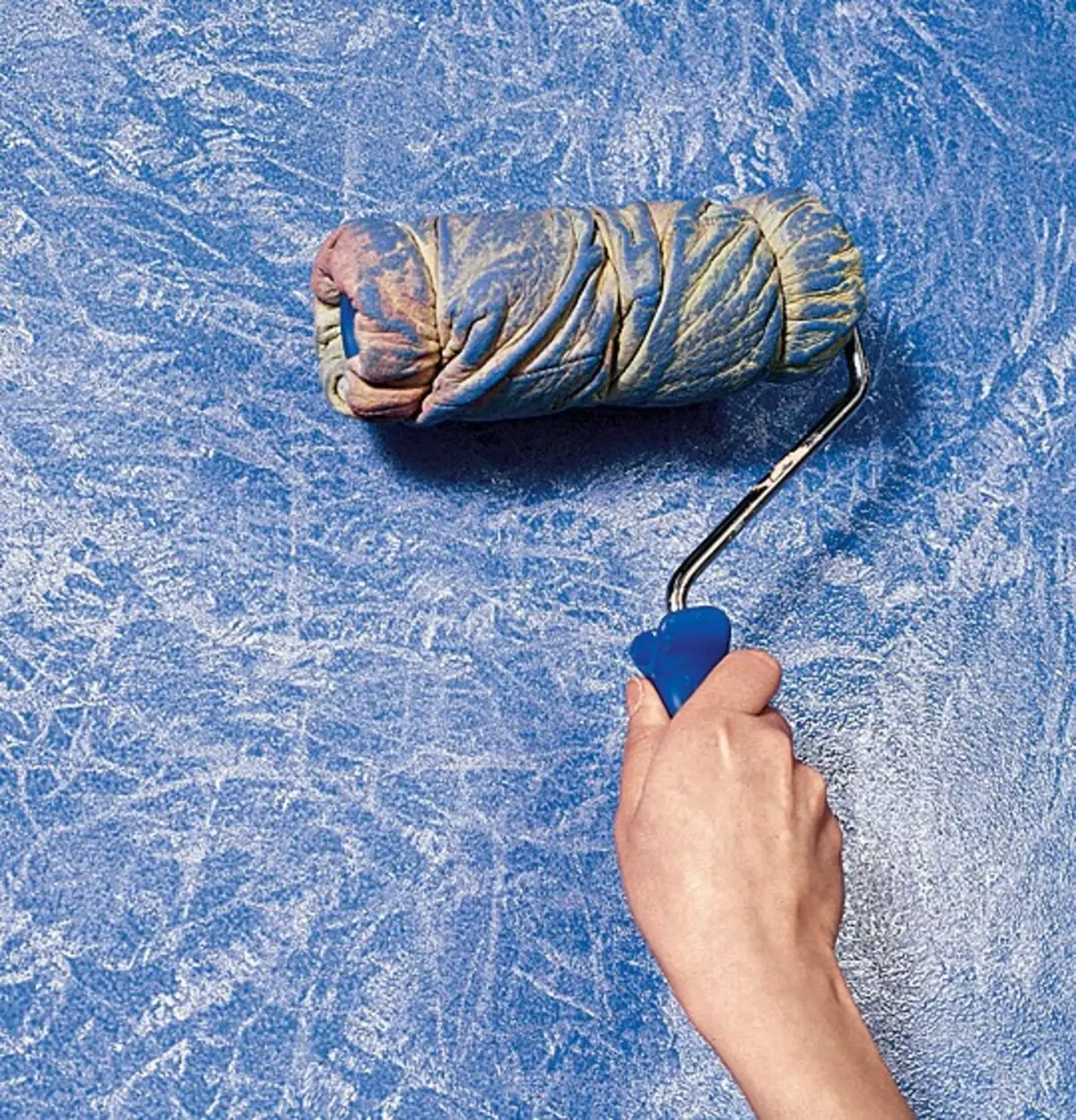
Photo: Tikkurila.
5 tips on coloring roller
- Select a roller suitable size with the desired coat. For water-dispersion, acrylic, latex, silicate and silicone colors, varnishes are suitable rollers from very flexible and soft natural fur (sheepskin, goat wool, which is sometimes called mohair), well absorbing and holding paint, as well as from Falone (Maltopren, Flock ).
- In order for the paint to lay on the wall smoothly and without heights, before applying the composition, the roller should be well rolled in a special pallet either by a leaf of perforated metal, and in the extreme case - on the sheet of cardboard or plywood. Then on the fur coat will remain the required amount of paint.
- For general operating work, large rollers with a diameter of 38-55 mm are most often used, 140-250 mm long. The most common type, beloved and professionals, and amateur painters, are medium rollers, or midi, with a 33 mm base diameter, 100-160 mm long. Small rollers with a diameter of the base of 15 mm, length from 55 mm to 150 mm are suitable for coloring of small or hard-to-reach surfaces, including corners.
- Do not apply the same roller for applying paints of different types, even if it was wellhed with the corresponding solvent.
- If you need to protect the roller from drying for several days, carefully pack it into a whole polyethylene package and tighten tightly.
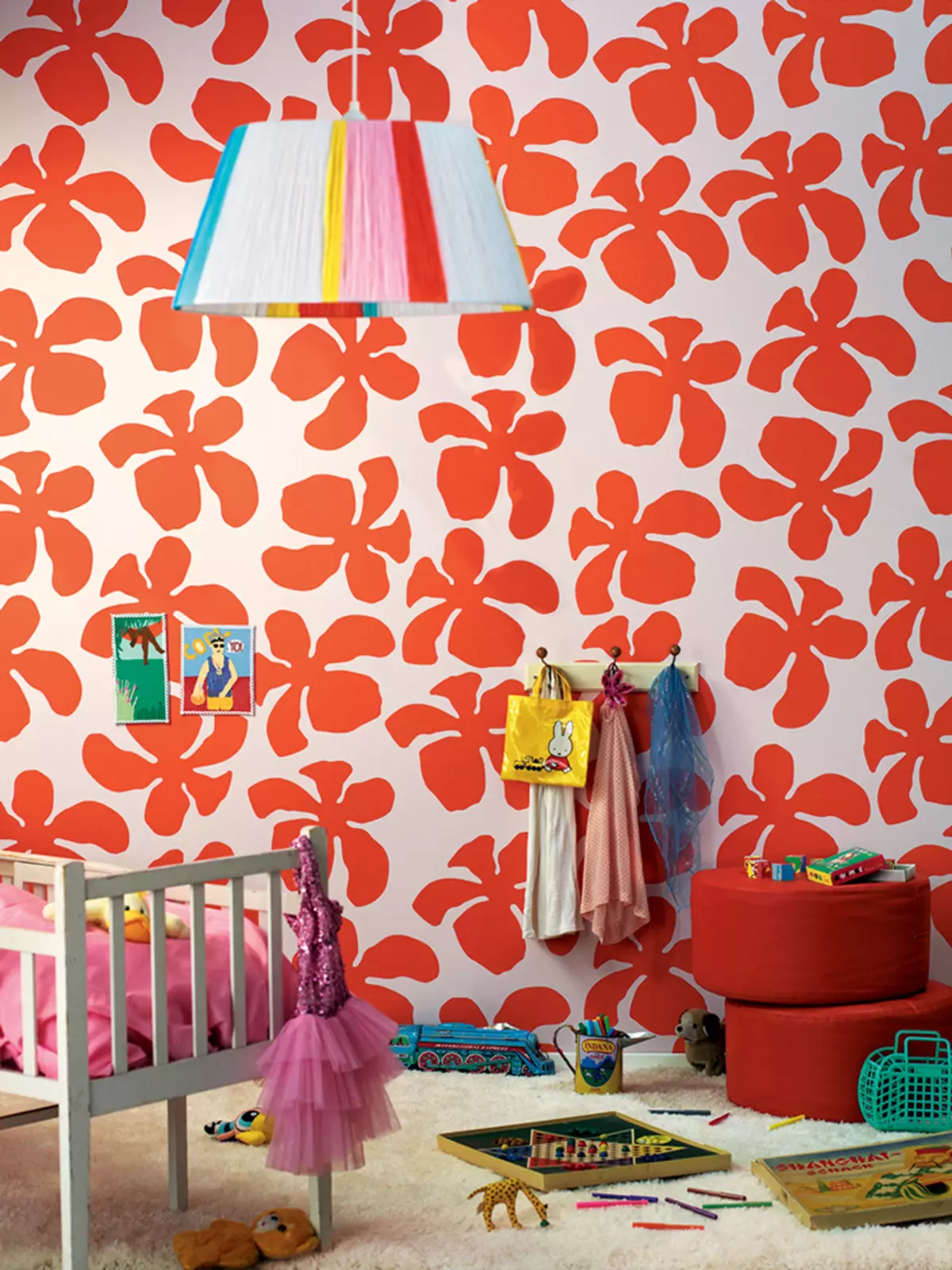
Photo: Tikkurila.
6. Hand painted
Lovers of the unusual design of walls often turn to such decorative reception as a painting. Sophisticated artistic work trust professionals. However, be prepared for the fact that the initial price of 1 m² of painting - 3 thousand rubles. However, today similar techniques are becoming more accessible and easier in operation, for example, when using the stencil or projecting a picture on the wall using a video or diaproducture. In the latter case, it is easy to adjust the size of the elements and the number of their repetitions. These simple techniques will reduce the time of registration, especially if you do not apply the image to the entire wall, but on its part.

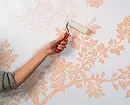
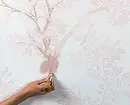
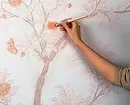
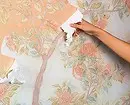
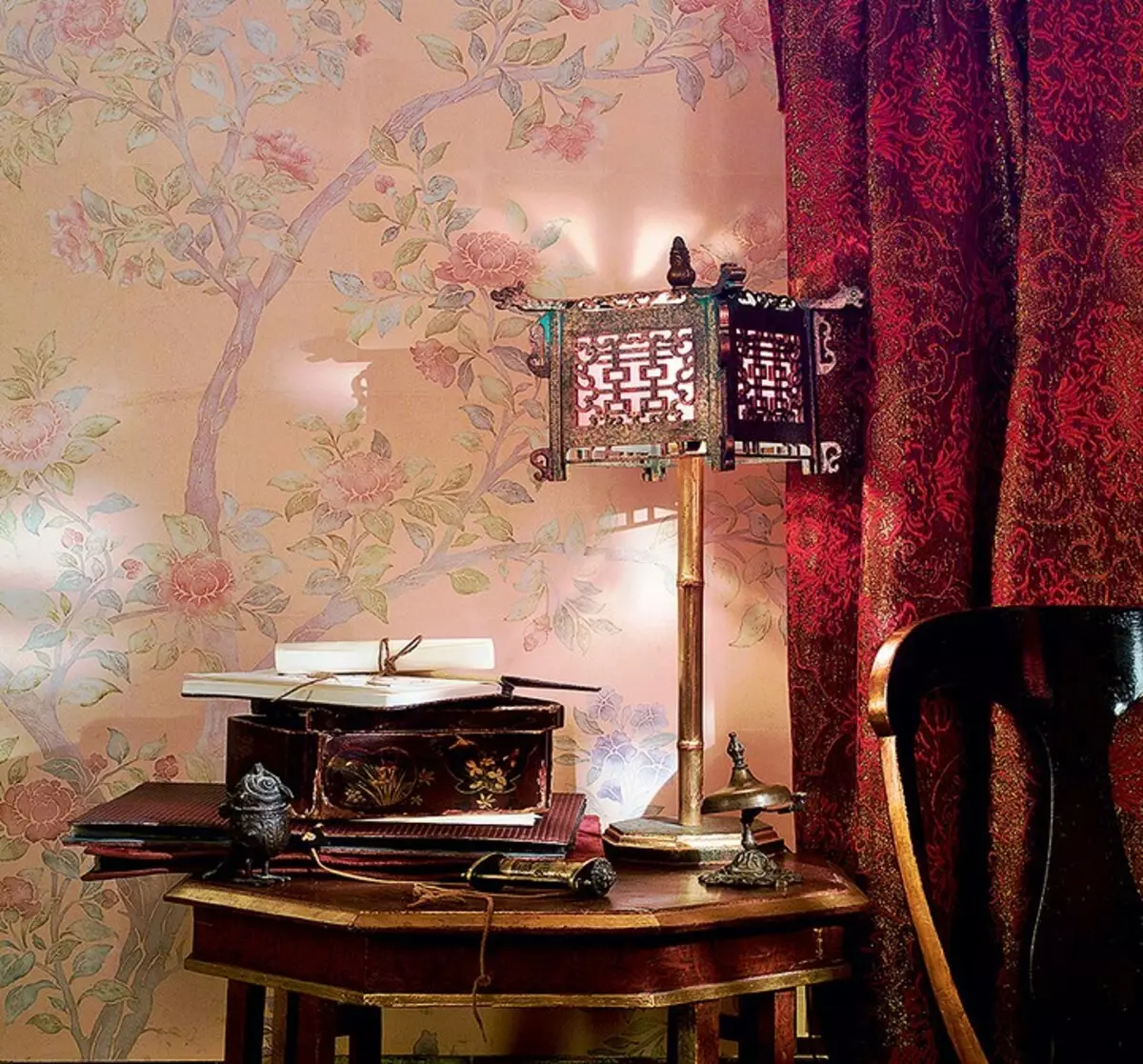
Photo: "Marat Ka"
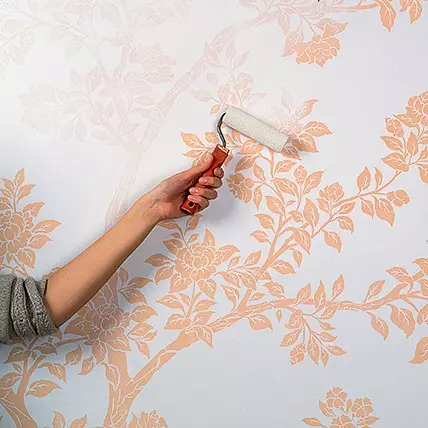
On the surface of the wall glued the film with a drawing carved on it. Velor roller apply white paint. Photo: "Marat Ka"
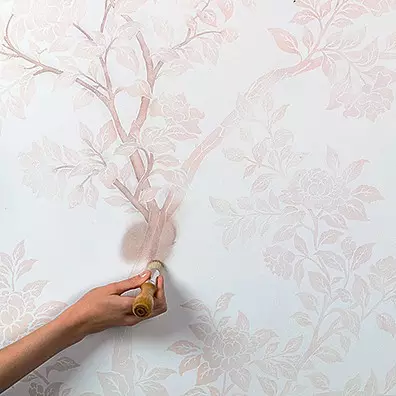
The drawing of the cut-off in contours is handed, using Glezal ("Marat Ka") of different colors. Photo: "Marat Ka"
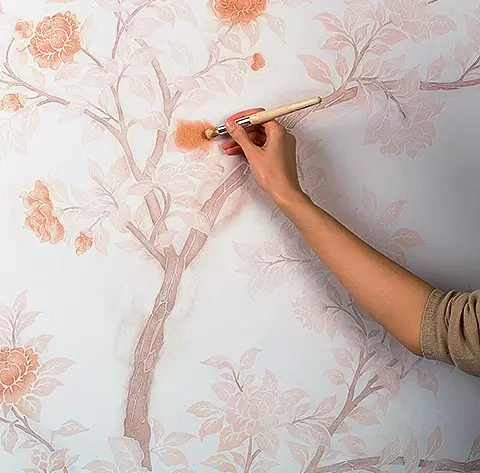
Elements are painted uneven: from edge to the center. Photo: "Marat Ka"
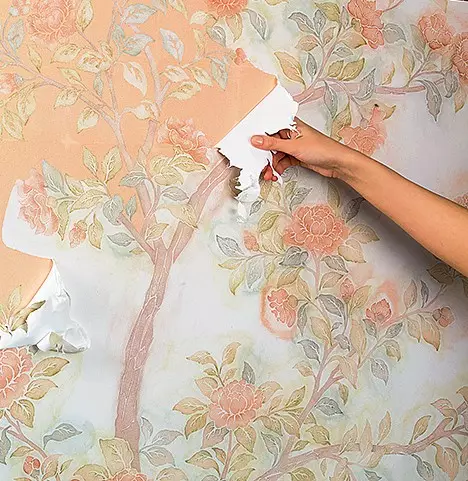
Then the stencil is neatly removed. Photo: "Marat Ka"
7. Stenat
The stencil paint is the most convenient way to decorate the interior. Pictures on the walls, borders, or large, covering the entire surface of the walls of the image, which are placed symmetrically or in any order, become part of the interior and are completely able to replace the paintings and other design elements. So, the border on the perimeter of the room will give the integrity of its design. A regular recurring ornament will help create imitation of wallpaper. The image will become more natural if you use several different colors, place the elements of layers or partially impose them to each other.

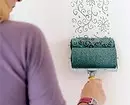

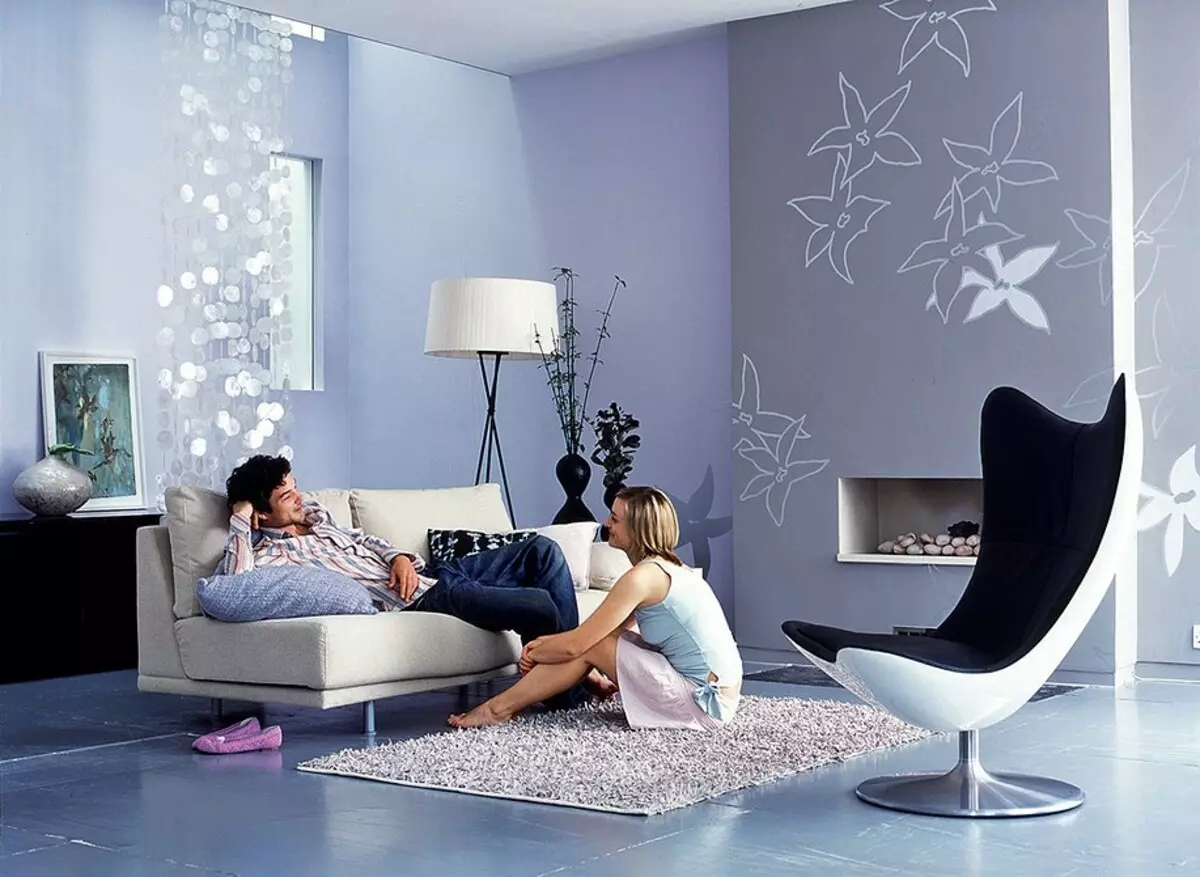
Photo: Akzo Nobel
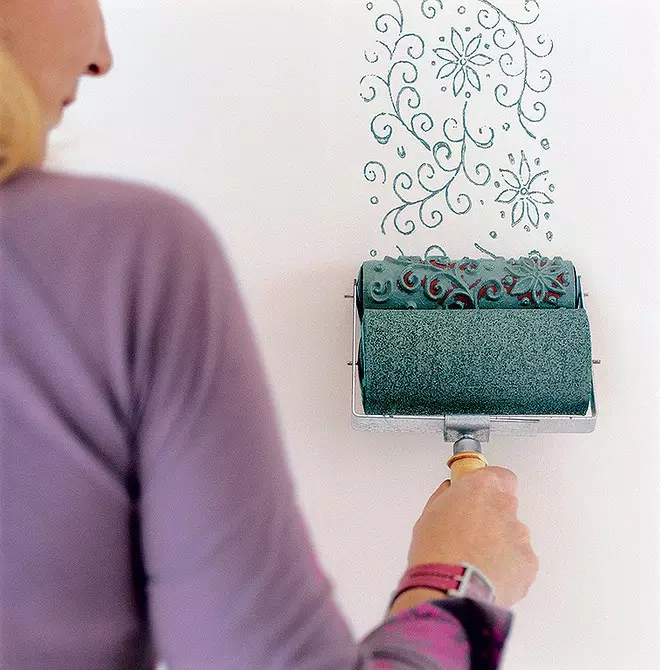
Photo: Akzo Nobel
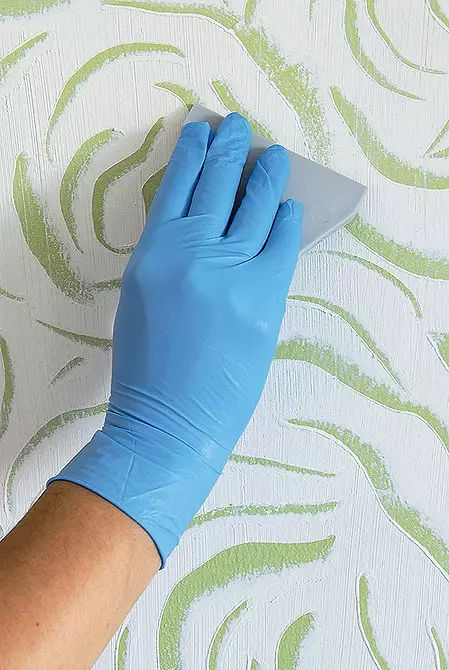
Photo: Tikkurila.




